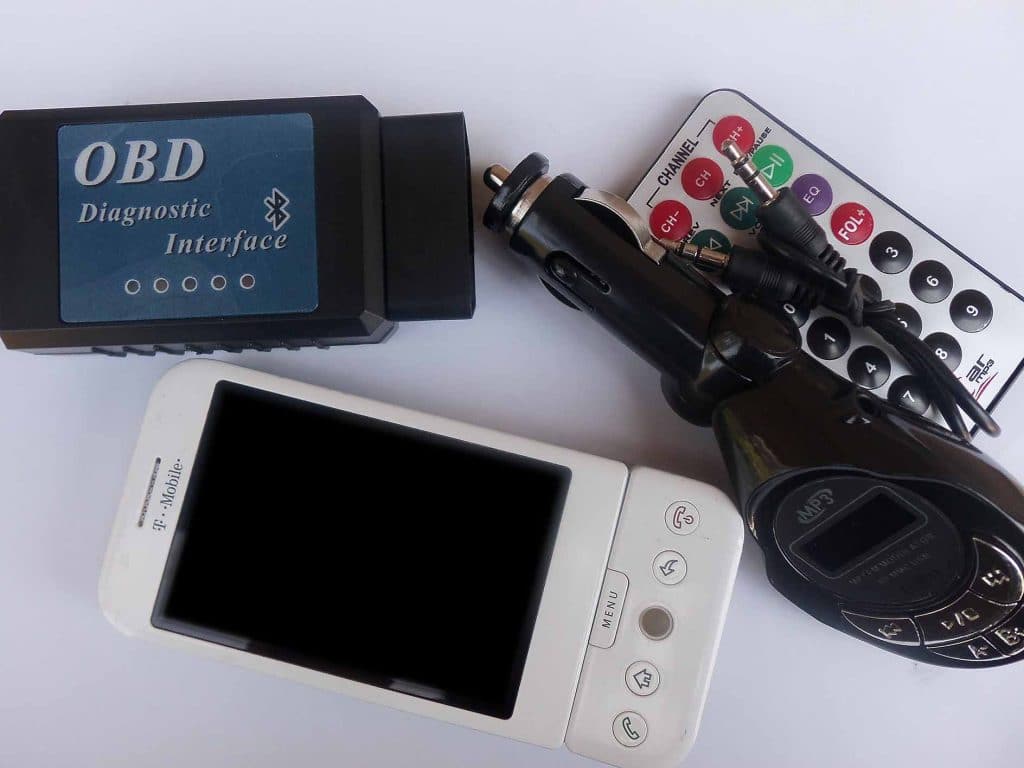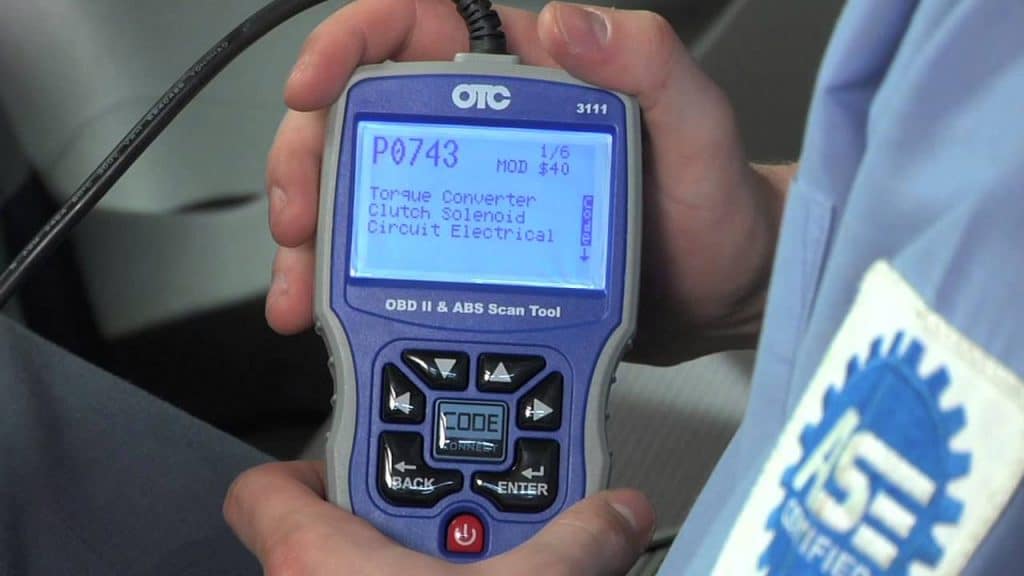Modern cars use a computer system called an on-board diagnostic system (OBD). This on-board computer system not only helps to run your vehicle for peak performance, but it can also make decisions about how your car uses various components to run, and lets you know when something is wrong.
When something goes wrong, the OBD will commonly illuminate one of the lights on the dashboard which should alert you to the problem. Once one of the indicator lights illuminates you can use an OBD scanner to help you start to address the issue.
Before the 1990’s OBD’s were not standard for all cars, and you would need the specific scanner for the type of car that you had. When the OBD was standardized, it made car maintenance significantly more accessible, and owners were empowered to address vehicle issues on their own.
In 1996, the EPA dictated that all cars must adhere to obd2 scan tool and meet a certain number of minimum standards. Not only did this mean that car owners could now use one code reader for all cars, but it also meant that they could get more detailed information and access to less expensive code readers.
Current code readers should be able to read error or trouble codes for all makes and models of cars, but cheaper models or knock-offs may be behind the times. Vehicles of a certain make tend to share the same error codes with future models, and OBD II scanners should be used for several years.
What Is an OBD Scanner?
Whether your car is relatively new, or several years old, an OBD scanner is a helpful tool that can help diagnose problems with your vehicle and save you time. An OBD scanner is a device that connects to your car and scans your vehicle’s’ computer to retrieve the code that corresponds to the problem at hand.
An OBD scanner can tell you why your check engine light is on, or why other indicator lights are illuminated. The device can also clear these errors from your vehicle once the issue has been corrected and can help you fix simple vehicle issues by yourself.
Now all cars use the car scanner tool which can monitor all systems in the vehicle and further control most of them. When there is an issue, you can still expect to see the check engine light, and your OBD scanning tool will always provide a trouble code.
More complex devices can also give you information about how the engine is running in close to real time and may also include other diagnostic tests. These more complex machines typically use another device such as a laptop to display a broader range of data and to run multiple tests for comparison.
How Does It Work?
To use an OBD scanner, you’ll first need to connect it to your vehicle port that is typically found under the dash on most models. It may be difficult to see while sitting in the car, so you may need to step out and look farther underneath to find it.
Some connection points will have a cap over them, but many are just open, and you should be able to see small shiny pins that correspond with the OBD scanner. After you have read the manual for your particular OBD scanner, you should be able to connect it and allow it to run.
Once the scanner has completed its diagnostic process, a code should show up that consists of numbers and letters. You can do an internet search or look in a reference book for this code and find more information about what the code means, and what parts may be affected.
Often you will find that the codes from the OBD scanner will lead you to an online forum where other vehicle owners of the same make and model have had the same issue you may be experiencing. Their insights into how they solved the problem can help you decipher what your best next step is and how you may ultimately correct the problem.
OBD scanners can also be useful for clearing away error codes from your vehicle’s computer. It is not uncommon that once the problem with your car is fixed that the error code may continue to pop up until you clear it from your vehicle computer.
You may also notice that even after you have fixed the issue with your vehicle that the check engine light continues to come on as well. The OBD scanner can clear this too, and it’s one of the reasons why this tool is so valuable.
What to Consider Before You Buy
Buying an OBD scanner doesn’t have to be complicated, but knowing what your budget is, what features you need, and how much technical knowledge you’re willing to use are all good things to think about before purchasing. Many OBD scanners are simple plug-and-play type devices that connect to a phone, while others are complex and could cost much more.
#1. General Cost
OBD scanners range in cost from about $50 to several hundred dollars depending on the kind of scanner and the features and accessories included. A higher price doesn’t necessarily guarantee quality or features, so be sure to look at the details and specifications to make sure it’s worth the extra cost.
For many people, a simple $50 OBD scanner will do the primary job that they need it to do, and then they can do further research to get more detailed information about the code that is provided. While not all scanners are equally reliable, there is a considerable amount of user feedback available online for several different models.
When considering your budget for an item like an OBD scanner, think how often you may need to use it, and how much information you would like it to yield. Simpler devices will provide a code with a generic description that you can look up online. More expensive models may include more detailed information about the specific code.
Casual users find that lesser expensive models give them the necessary code and are sufficient for their occasional needs. However, if you plan to use this device often to address more complex issues and fine tune your vehicle you may want to opt for a unit with more features.
#2. Features and Functionality
Displaying error codes if the most basic function of an OBD scanner, however further information is typically reserved for more complex devices. Some models of OBD scanners will offer suggestions, interface with your other devices, and record data for future sessions.
They can also re-run diagnostics, show multiple error codes and other data that the vehicle computer may include with different scans. When considering different scanners, it’s a good idea to make a list of the features needed for your application and then search for a model that includes all of them.
The last thing you’ll want to do is purchase a sub-par scanner with limited features and have to buy another one to get the other features and enhanced detail that you need. While having a backup device is not a bad idea if you plan to use this scanner often, using multiple devices to complete one scan is less than efficient.
Some OBD scanners can be quite sophisticated, so if you aren’t sure of all of the options available to you, a quick online search can provide many different options. Some scanners can turn off check engine lights, tell you precisely which part of your car is faulty, and display diagnostic data about the engine in real time as it is running.
#3. Technical Know-How
Getting the most fully featured OBD scanner may not be in your best interest if the time it takes to learn how to use it exceeds your patience for learning about the technology. While simple scanners are plug and go type setups, others may require you to choose specific functions that you want to be tested instead of a general scan.
It’s true that OBD scanners come with manuals, and you may need to consult with the manual regardless of the complexity of the scanner. However, a fundamental diagnostic scanner can provide enough information to get you started and won’t cost a lot of money.
For those that are interested in the specifics and want to use other devices like laptops or phones in the process, a sophisticated tool with lots of functionality may fit perfectly with your workflow and yield ample amounts of data.
Some simple OBD scanners use an app to connect to a cellphone, and others can connect to laptops. More complex devices frequently will also connect to a cell phone but are much more likely to connect to a laptop that can also run supportive autoscanner software to extract more from the data provided by the OBD scanner.
Simple OBD scanners are the most popular with everyday consumers that only use them a few times a year. But car enthusiasts may opt for more complex models that can provide higher levels of data than just an error code.


Leave a Reply